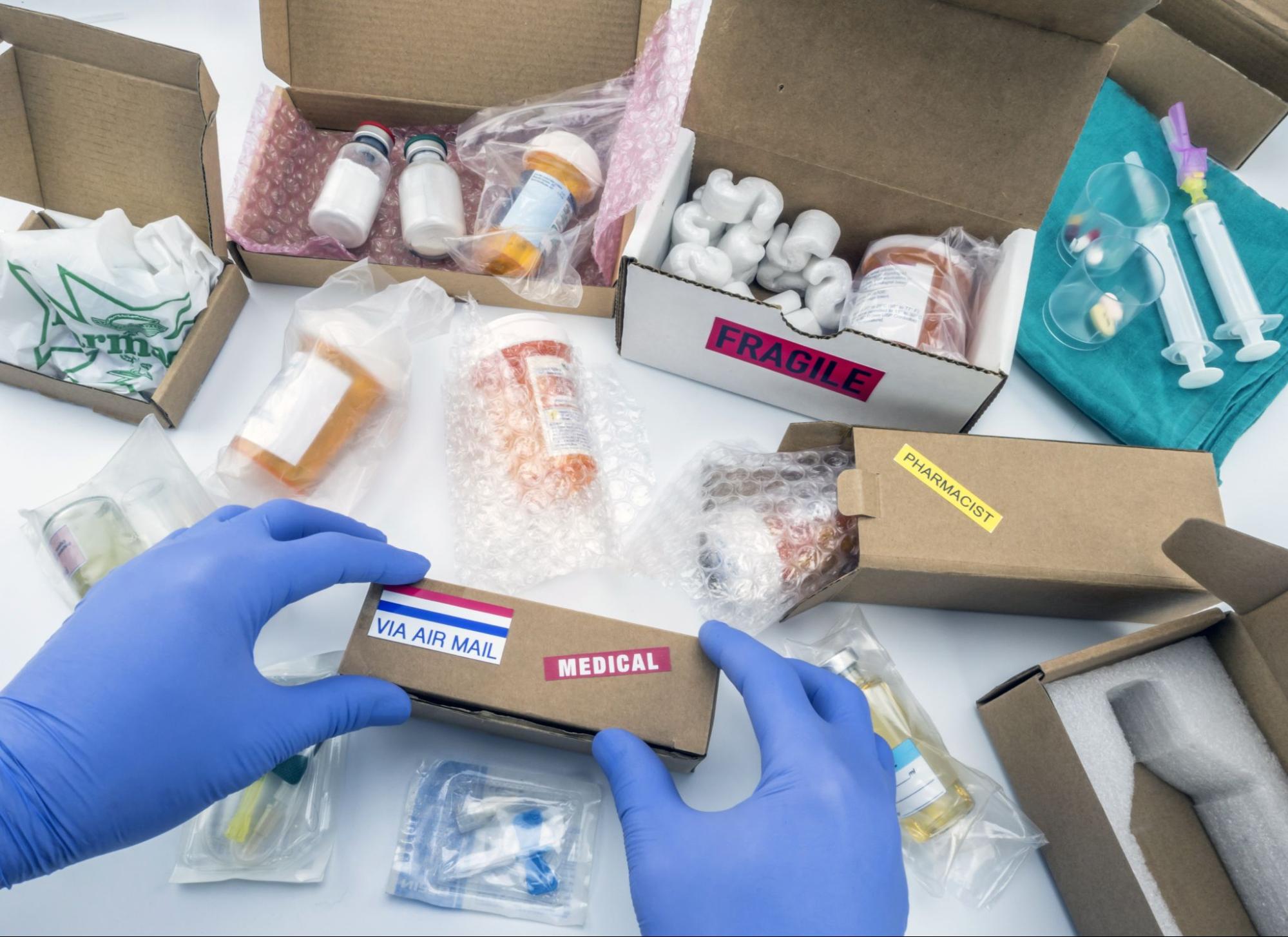
Overcoming Stigma in Pain Management and Pharmacy Practice
Pain is a universal human experience and one of the most common reasons patients seek healthcare. However, providing effective pain care can be challenging due to various barriers that impact the delivery and quality of treatment, including stigma attached to the use of medications to manage chronic pain.
In observance of Pain Awareness Month, we take a look at barriers to effective pain management with a focus on stigma. By understanding the factors that contribute to stigma and developing strategies to counter it, pharmacists and other healthcare providers can create a more compassionate environment for patients in pain, where individuals receive the care they need without judgment or prejudice.
The Cost of Pain
The economic burden of pain-related healthcare utilization and lost productivity in the United States has been estimated to be between $560 and $635 billion annually. This staggering cost highlights the need for effective pain care strategies.
Additionally, persistent or chronic pain has a significant impact on patients’ emotional, functional, and financial well-being. By fostering a better understanding of pain and its treatment, we can begin to break down the barriers that perpetuate stigma.
Understanding Stigma in Pharmacy Practice
Stigma, in the context of pain management, refers to the negative attitudes, beliefs, and stereotypes associated with pain medication and those who seek it. These stigmatizing beliefs can arise from various sources, including societal misconceptions, media portrayals, and the personal biases held by healthcare providers.
The opioid epidemic has brought pain medication to the forefront of public health concerns. While it is a professional imperative to acknowledge the potential risks associated with opioid medications, stigma surrounding pain and opioid use creates significant barriers to optimal pain care. Patients reporting pain have often been disbelieved, dismissed, or labeled as “drug seekers.” This stigma not only undermines patients’ experiences but also affects their access to appropriate pain management.
On the flip side, stigmatization of medications used for opioid use disorder further compounds the problem by limiting access to potentially life-saving interventions. Pharmacists and pharmacy practice are part of the conversation about how to better differentiate between appropriate medical use and misuse, so that we can ensure that those who need pain relief can access it safely and responsibly.
The Impact on Pain Management Cannot Be Understated
Stigma not only affects the quality of care patients receive but has significant psychological and emotional consequences for individuals living with chronic pain.
Patients who experience stigma may be hesitant to seek help or disclose the extent of their pain to healthcare professionals. This can lead to underreporting of symptoms and inadequate pain management. Additionally, stigma can create a sense of shame and isolation for individuals, further exacerbating their suffering.
This inadequacy can also manifest in the form of healthcare provider bias. When healthcare professionals hold stigmatizing beliefs, they may be less likely to prescribe appropriate pain medication or provide adequate support to patients. This can result in suboptimal pain management and a lack of trust between patients and their healthcare providers.
While detrimental to individual patients, inadequate pain management can spread to society as a whole. When individuals are unable to access proper pain management, they may resort to self-medication or other potentially harmful practices. By reducing stigma and improving access to appropriate care, we can mitigate the risks associated with untreated or undertreated pain.
Root Causes of Stigma
Lack of education
Many healthcare professionals receive limited training on pain management, leading to misconceptions and inadequate care for patients in pain. Investing in comprehensive pharmacy education and training programs can help address this barrier.
Societal misconceptions
It’s easy to define pain management according to worst-case scenarios, media portrayals, and fear-based narratives. Challenging misconceptions about pain medication and its use requires a collective effort that involves public awareness campaigns, media representation, and community engagement.
Systemic barriers
Access to appropriate pain management can be hindered by various systemic factors, including insurance coverage, healthcare policies, and the availability of pain management resources. Addressing these barriers requires advocacy and policy changes at the institutional—including pharmacy—and governmental levels.
Other Barriers to Effective Pain Care
Payer Administrative and Reimbursement Barriers
One of the significant barriers to effective pain care is the administrative practices and payment structures implemented by payers. Prior authorization requirements, which are particularly burdensome, delay patient treatment and create additional administrative workload.
The “fail first”policy, where payers cover the least costly medication or treatment first, further limits access to appropriate pain care. Inconsistent coverage and payment for multidisciplinary, multimodal, and collaborative pain care also pose challenges for patients and healthcare providers.
Payers still have work to do when it comes to addressing requirements for non-opioid pain care and ensuring adequate coverage and reimbursement for evidence-based treatments. Policies should align with clinical practices and the needs of patients with complex pain conditions.
Slow Implementation of Evidence-Based Pain Management
Pain research poses unique challenges due to the subjective nature of pain and the need to consider social, emotional, and functional factors. Objectively measuring pain is challenging, requiring researchers to use different theoretical models and approaches.
Clinicians need evidence of safety, cost-effectiveness, and effectiveness when developing individualized pain care plans. However, the uptake of novel and proven treatment options is hindered by payers’ reluctance to acknowledge the growing evidence base and clinical efficacy of complementary and integrative therapies.
Researchers should continue to explore innovative ways to study pain and develop comprehensive pain assessment tools. Payers, physicians, and policymakers must also recognize and accept the existing evidence on the efficacy of integrative and complementary therapies. By incorporating these therapies into pain care, healthcare providers can offer patients a broader range of effective treatment options.
Opioid Prescribing Guidelines
The Centers for Disease Control and Prevention (CDC) guidelines on opioid prescribing, intended to address the opioid epidemic, have had unintended consequences for patients with chronic pain. While the guidelines were meant to be voluntary and applied to primary care practices, they have been implemented as rigid limitations on opioid prescribing. Many patients who have benefited from long-term opioid therapy have experienced involuntary tapering or discontinuation of their medication, resulting in severe withdrawal symptoms and decreased quality of life.
Physician Workforce and Training
Despite the recognition of pain as a significant healthcare issue, pain education in medical schools is limited, variable, and fragmentary. This lack of comprehensive pain education leaves many physicians unprepared to address the complex nature of pain and provide evidence-based care.
There is a need for interprofessional collaboration and core competencies for pain to be integrated into medical education. Continuing medical education opportunities should be readily available to practicing physicians to enhance their understanding of pain management and the latest developments in the field.
Reducing Stigma in Pharmacy Practice
Every individual deserves to have their pain taken seriously and to receive appropriate treatment without judgment.
Reducing stigma can have a positive impact on treatment outcomes. When patients feel understood and supported by their healthcare providers, they are more likely to adhere to treatment plans and experience better pain relief. By creating an environment that promotes open communication and empathy, healthcare professionals can enhance the overall quality of care provided to patients.
It is essential for pharmacists and other healthcare providers to challenge their own biases, actively listen to patients, and advocate for comprehensive pain management strategies. By working collaboratively and addressing systemic barriers, we can create an environment where individuals in pain feel understood, supported, and empowered.
Strategies include:
- Education: Comprehensive and ongoing training on pain management, including the appropriate use of pain medication and the potential risks and benefits involved, can help reduce stigma. Accurate and up-to-date information can dispel misconceptions and foster a more compassionate approach to pain management.
- Patient empowerment: Helping patients take an active role in their pain management can help combat stigma. By involving patients in treatment decisions and providing them with the knowledge and tools to self-manage their pain, healthcare professionals can empower individuals to take control of their health. This not only improves treatment outcomes but also helps reduce the sense of powerlessness and stigma often associated with chronic pain.
- Empathetic communication in pharmacy practice: Effective communication is essential in reducing stigma and promoting patient-centered care. Healthcare professionals who strive to create a non-judgmental and empathetic environment help patients feel comfortable discussing their pain and treatment options. By actively listening to patients’ concerns and validating their experiences, pharmacists can establish trust and foster a supportive relationship that is crucial for effective pain management.
- Interprofessional collaboration: Reducing stigma requires collaboration across healthcare disciplines. Pharmacists can work alongside physicians, psychologists, and other healthcare professionals to develop more holistic, comprehensive pain management plans that address the physical, emotional, and psychological aspects of pain.
The future of stigma reduction in pharmacy practice lies in our collective commitment to empathy, equity, and evidence-based care.

